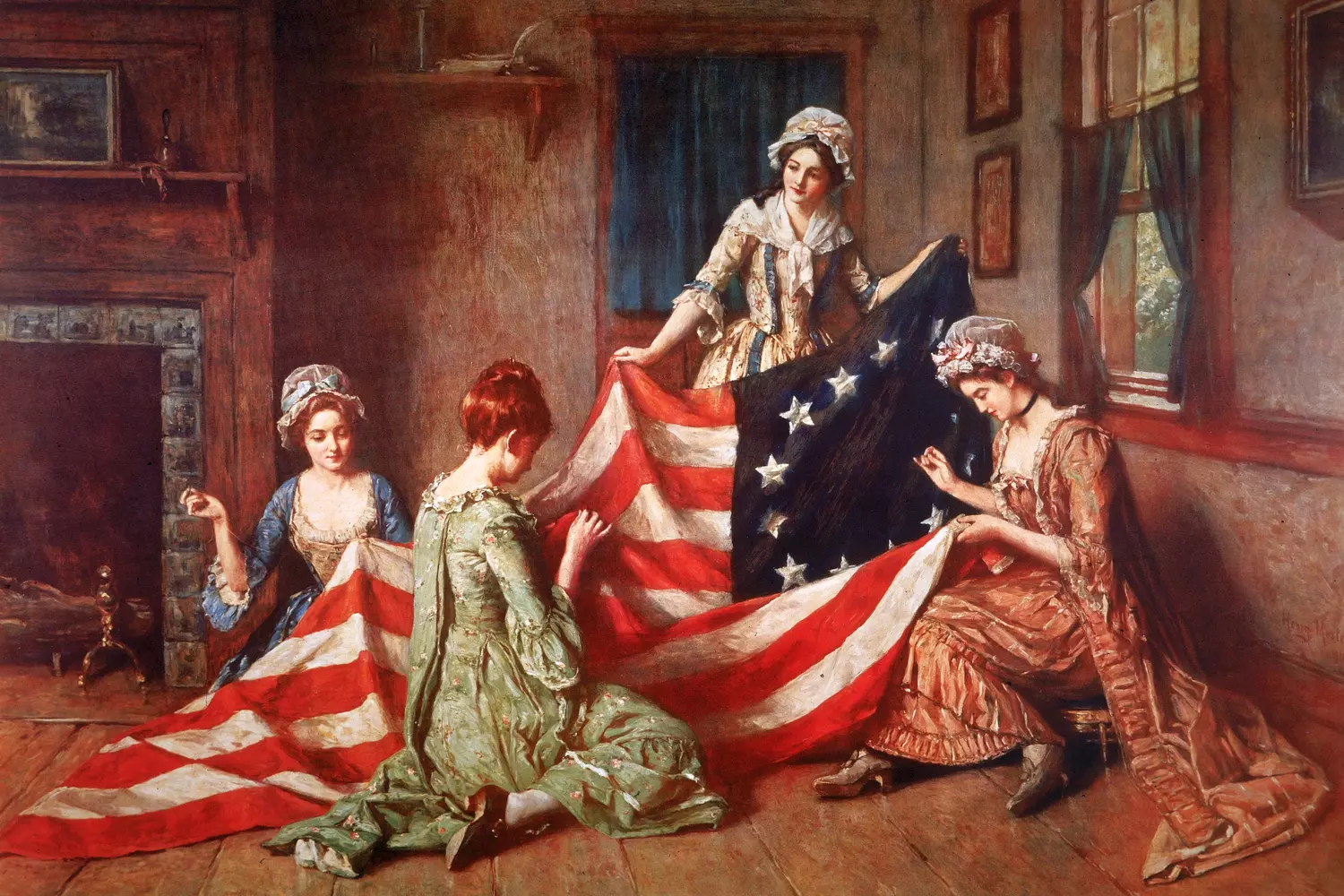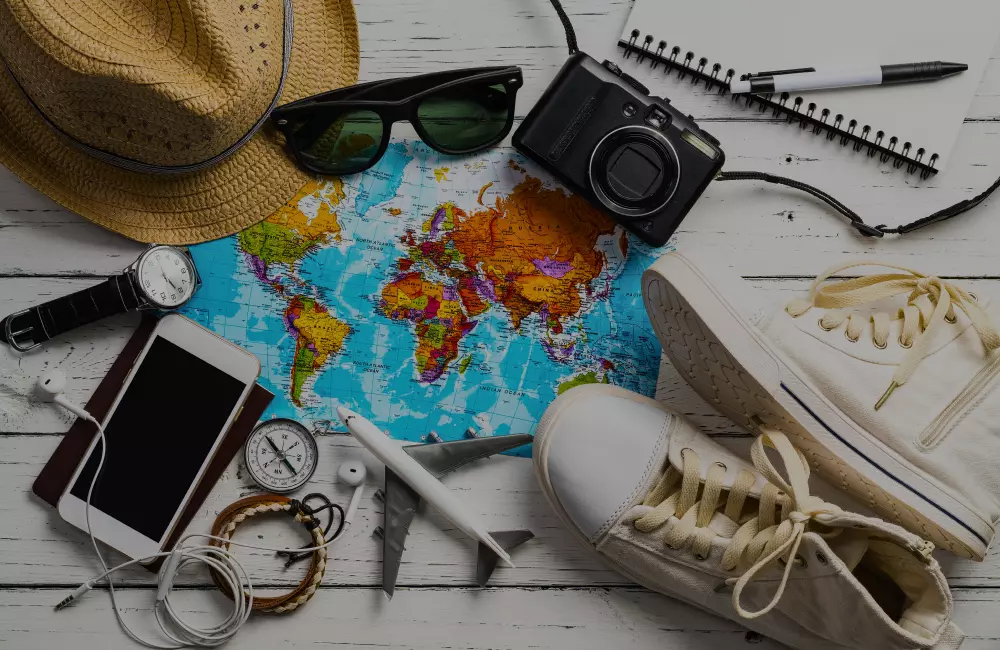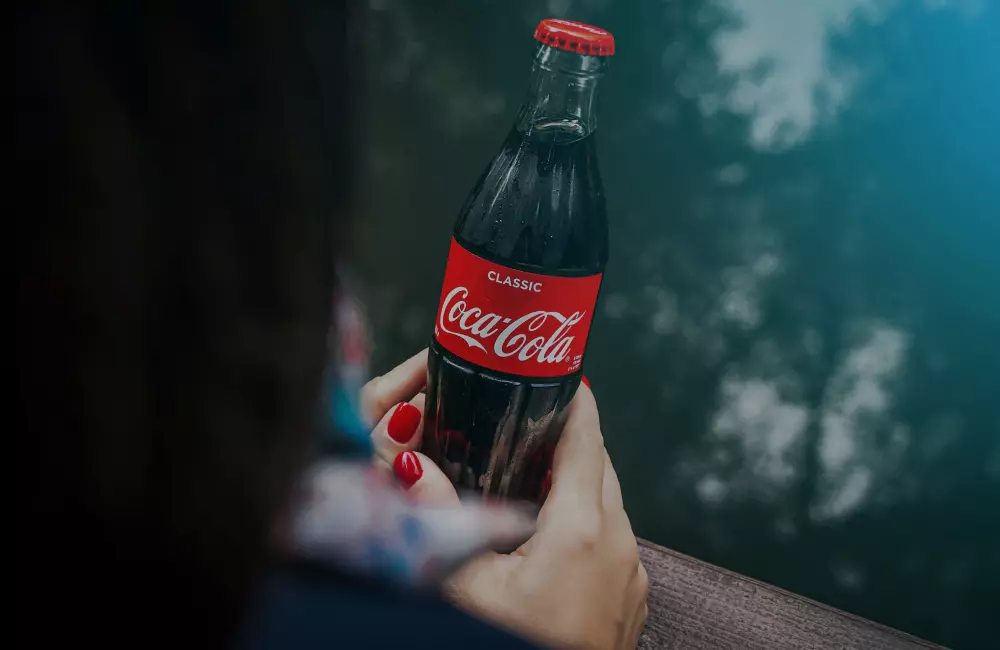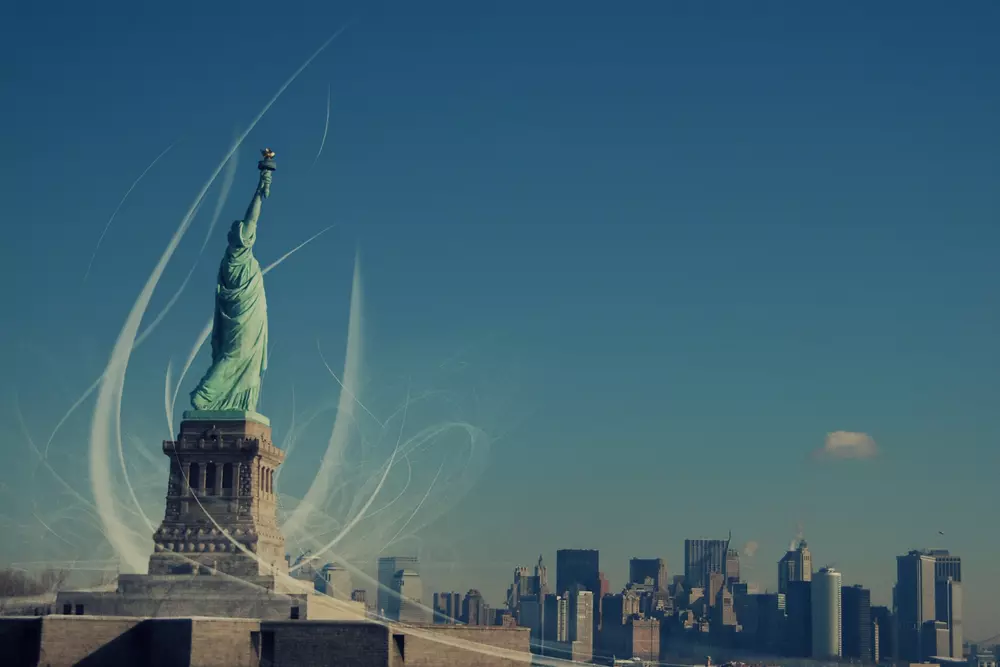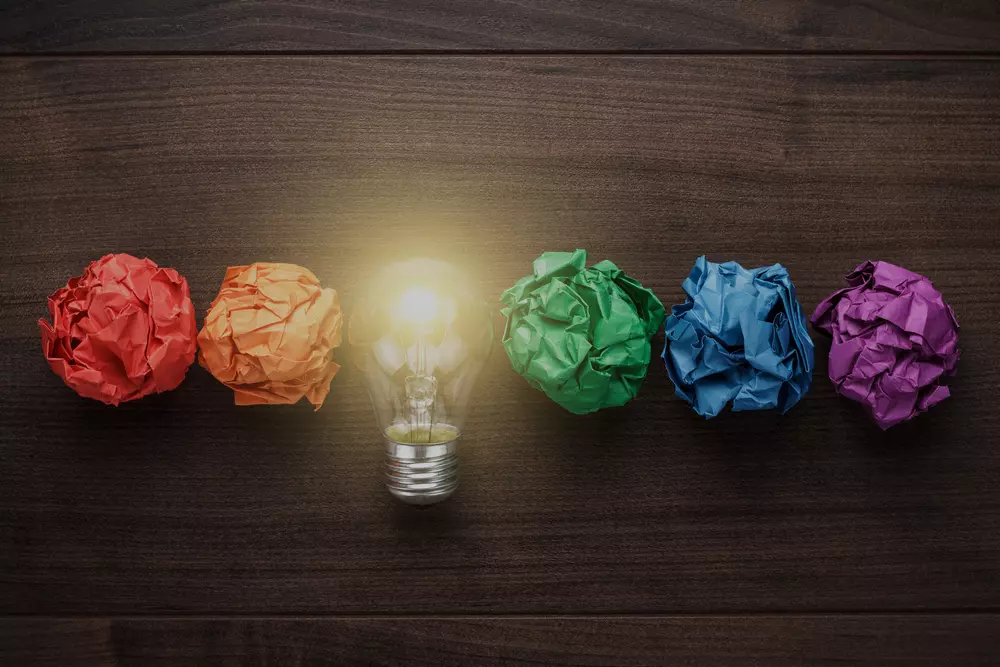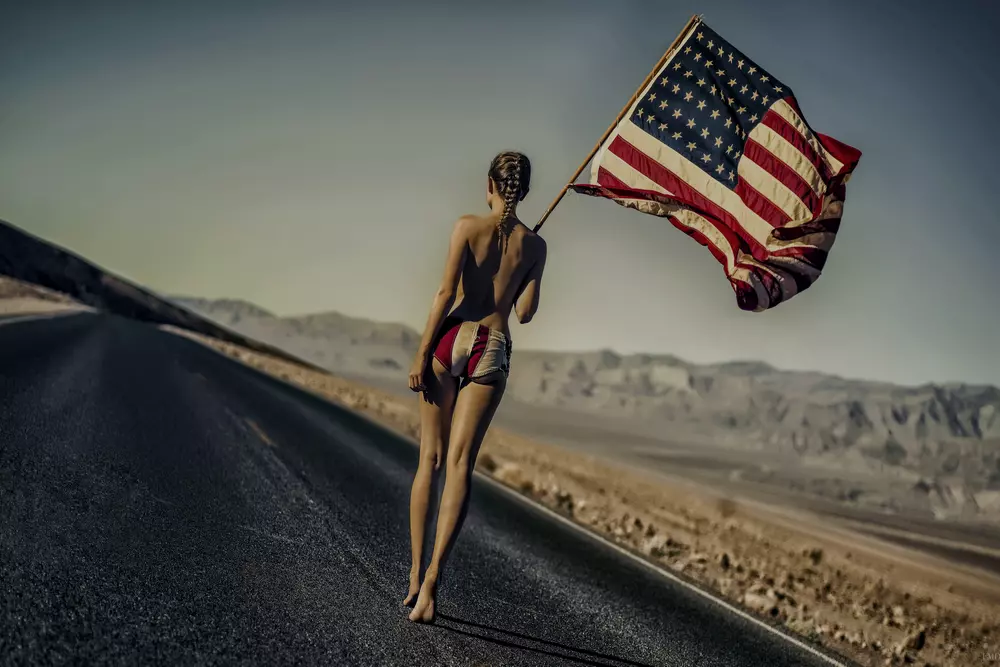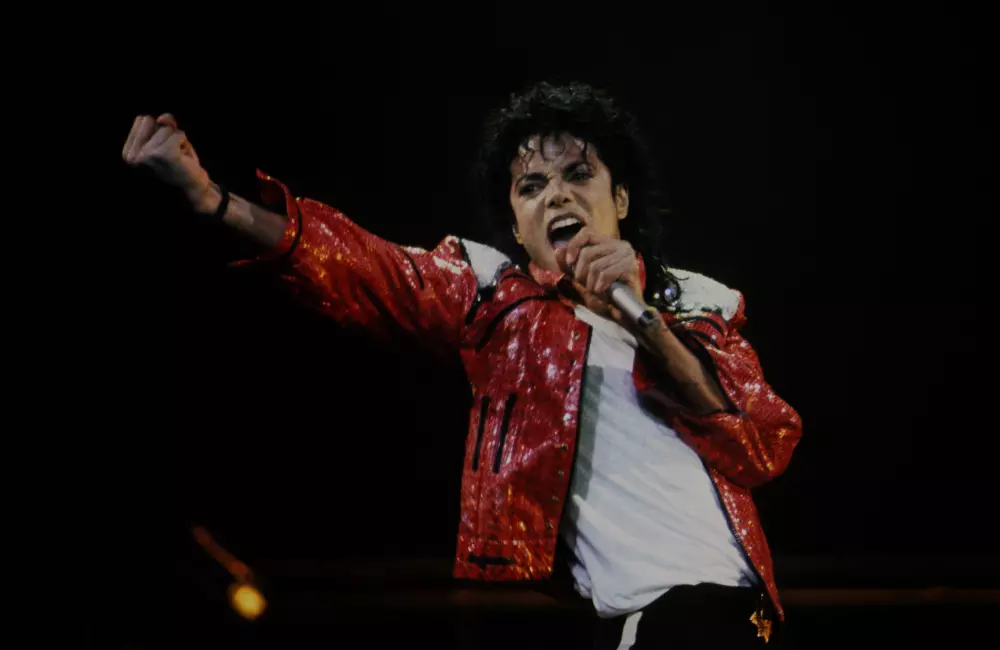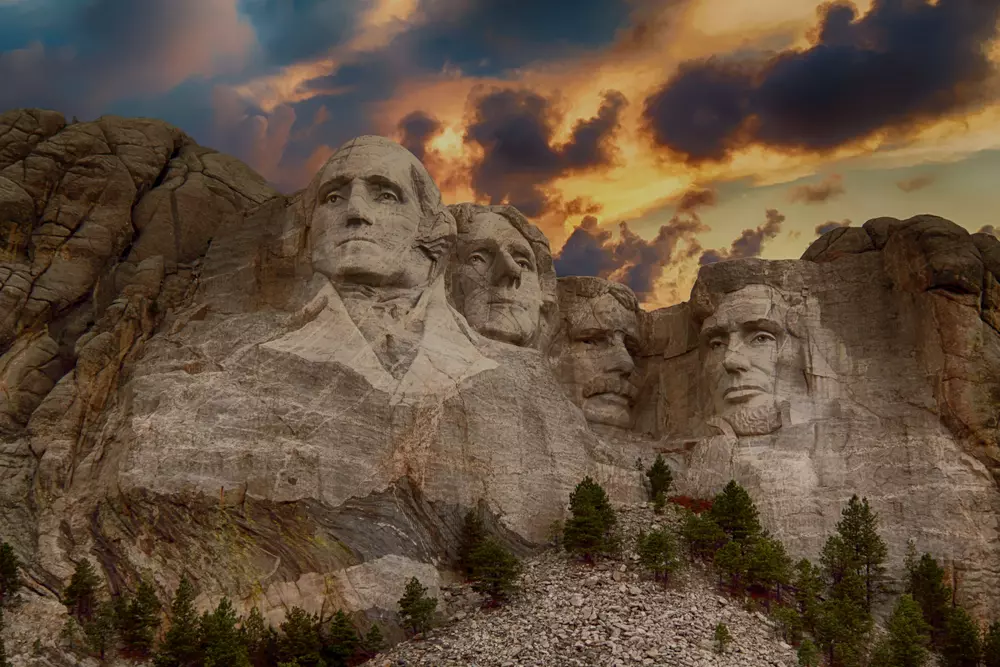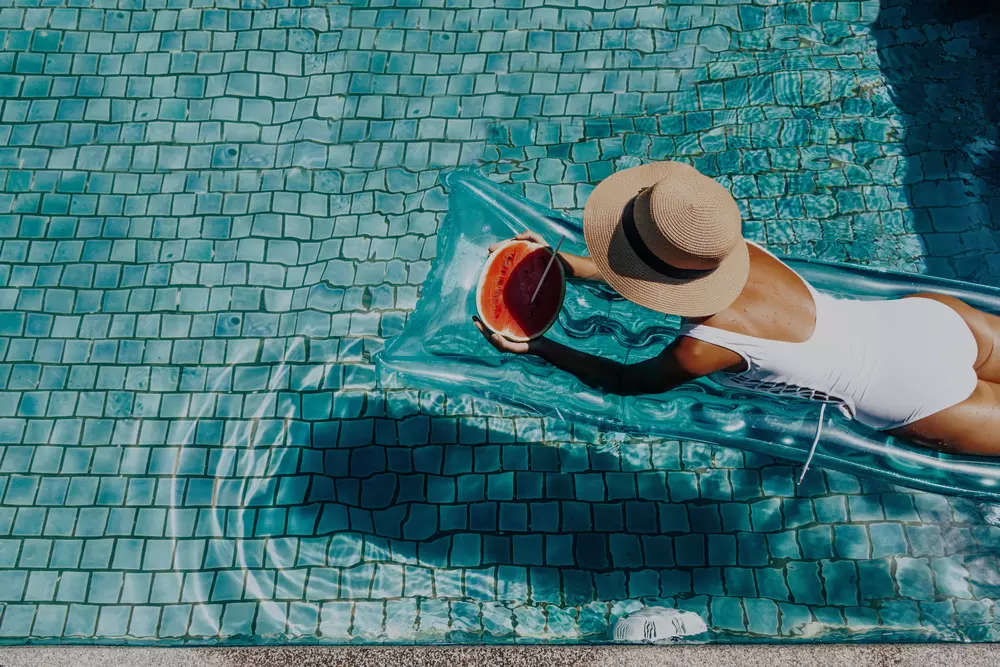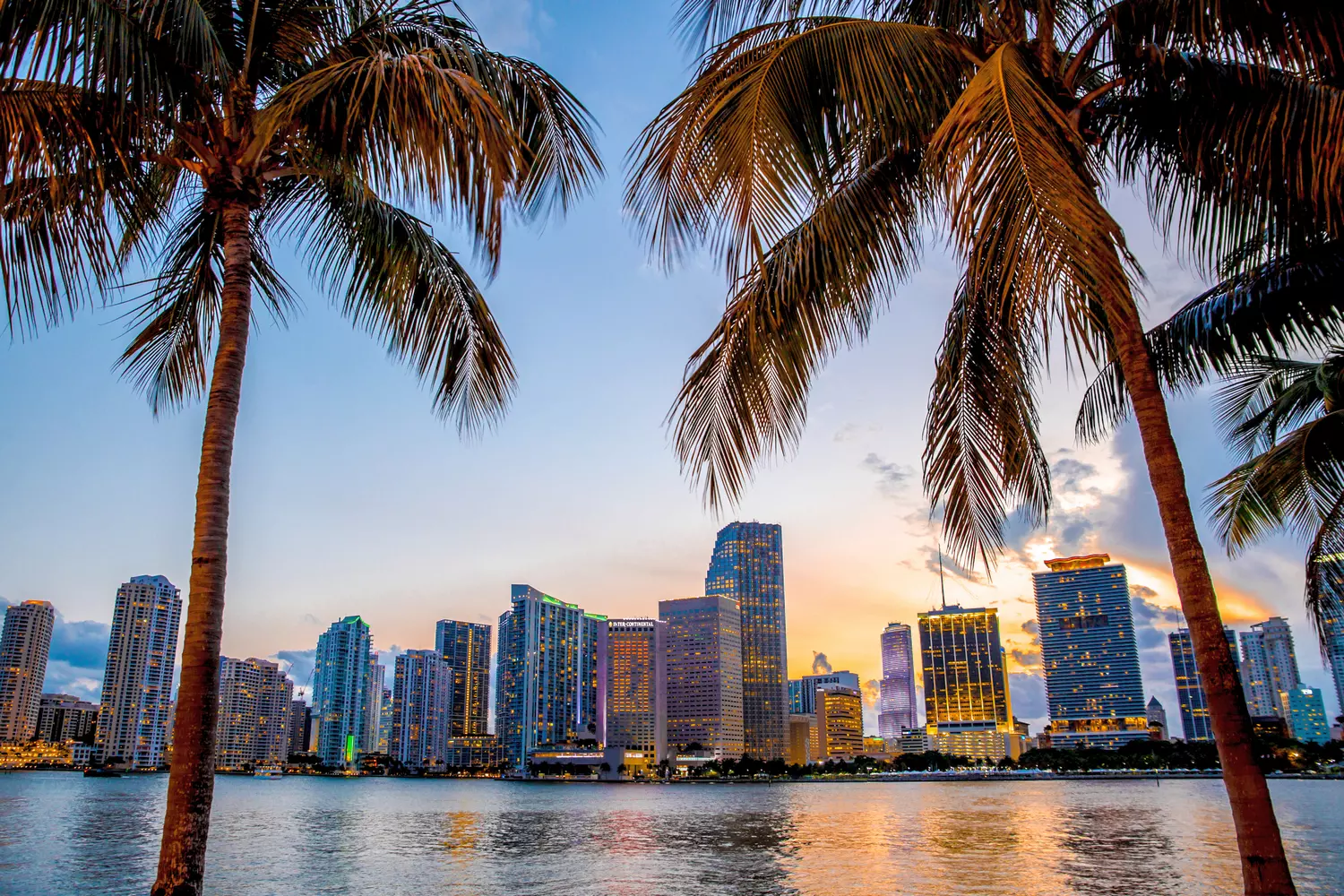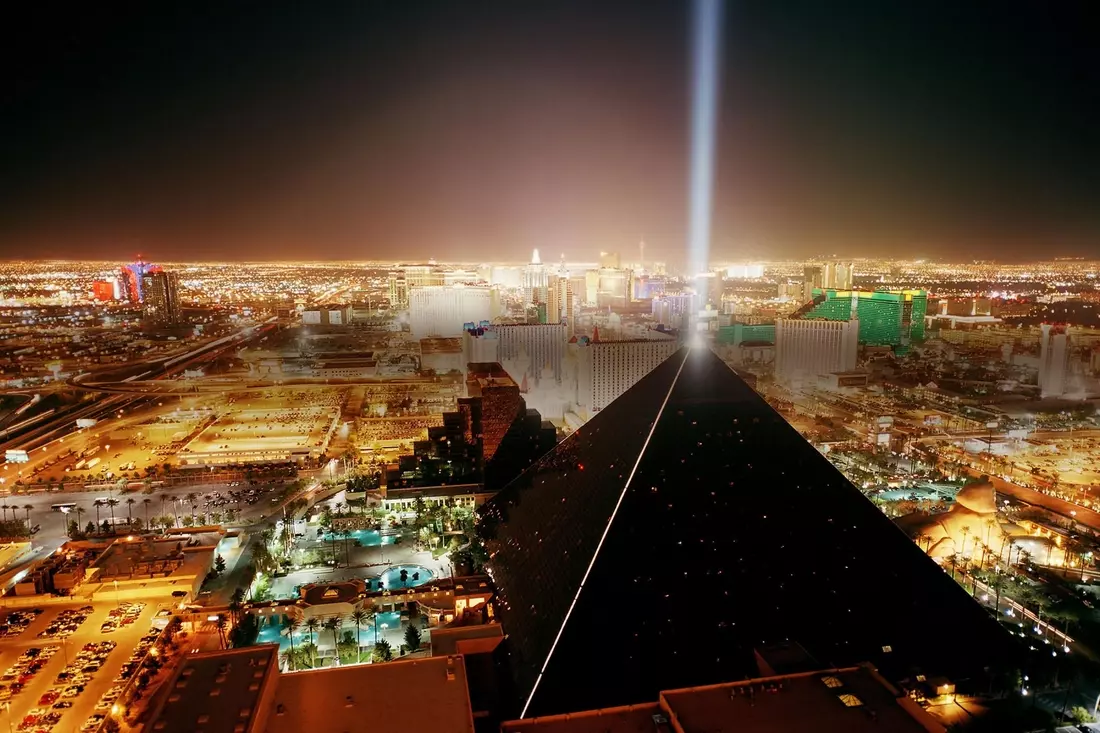In the early 20th century, the United States entered an era that would forever change its history — the period of Prohibition. This nationwide ban on the production, sale, and transportation of alcohol, which lasted from 1920 to 1933, became one of the most controversial initiatives in American history. Instead of achieving the expected societal improvements, it led to a surge in crime, a booming underground economy, and the rise of legendary criminal figures such as Al Capone. What were the driving forces behind this ban, its impact on society, and what lessons did America learn after its repeal?
The Rise of the Temperance Movement in the U.S.
The movement advocating for alcohol prohibition had been gaining momentum for decades before it was officially enacted. Several key factors contributed to its development:
- 01. Benjamin Rush and the Idea of Temperance
As early as the late 18th century, American physician, social reformer, and one of the signers of the Declaration of Independence, Benjamin Rush, published "An Inquiry into the Effects of Ardent Spirits on the Human Mind and Body." In it, he argued that excessive alcohol consumption led to physical and moral decay. He also introduced the concept of "alcohol addiction" and advocated for moderation. His ideas significantly influenced the temperance movement in the U.S. and laid the foundation for the first anti-alcohol societies. - 02. Religious Organizations
Christian preachers condemned drunkenness as a mortal sin and saw it as the root cause of society’s moral decline. Methodists, Baptists, and Quakers actively campaigned for alcohol prohibition, promoting the idea that sobriety was essential for spiritual salvation. They preached that drinking led to poverty, domestic violence, and societal decay, while banning alcohol would create a more virtuous and godly society. Their efforts led to the formation of the first temperance organizations and laid the groundwork for future Prohibition laws. - 03. Political Support
Populist and progressive parties used anti-alcohol rhetoric to attract voters, particularly in rural areas and among the working class. They argued that banning alcohol would improve the nation's moral standards, increase workplace productivity, and reduce crime rates. Politicians such as William Jennings Bryan championed sobriety as part of broader social reform. Eventually, political pressure intensified, leading to the passage of the 18th Amendment to the U.S. Constitution. - 04. Social Pressure
Women’s movements played a crucial role in advancing Prohibition. Organizations like the Women’s Christian Temperance Union (WCTU) and the Anti-Saloon League fought for the ban, arguing that alcohol destroyed families, led to domestic abuse, and undermined social values. Women organized marches, wrote petitions, and lobbied politicians to enact strict anti-alcohol laws. They also used religious arguments, portraying alcohol as a tool of the devil that corrupted souls. - 05. Early Alcohol Restrictions
In 1791, the U.S. Congress imposed a tax on whiskey, sparking the Whiskey Rebellion (1794) in Pennsylvania. Farmers and alcohol producers, especially in the western regions, saw the tax as unfair since it disproportionately affected small distillers while larger producers could afford the levy. Protesters attacked tax collectors, set fires, and engaged in armed confrontations with government forces. President George Washington personally deployed 13,000 troops to suppress the uprising, demonstrating the federal government's authority. This was one of the first significant public backlashes against alcohol regulation in U.S. history, highlighting the potential for social unrest.
World War I and Its Influence on Prohibition
During World War I (1914–1918), alcohol restrictions were enforced not only for moral reasons but also as part of economic policy:
- Conserving Grain
The U.S. government aimed to reduce grain usage for alcohol production, redirecting it toward food supplies for the military and civilian population. - Anti-German Sentiment
Many American breweries were owned by German immigrants. The war intensified anti-German attitudes, leading to the closure of numerous breweries and a decline in beer’s popularity. - Patriotic Rhetoric
Anti-alcohol activists used the war as an opportunity to strengthen their campaign, arguing that sobriety made the nation stronger and contributed to America’s victory.
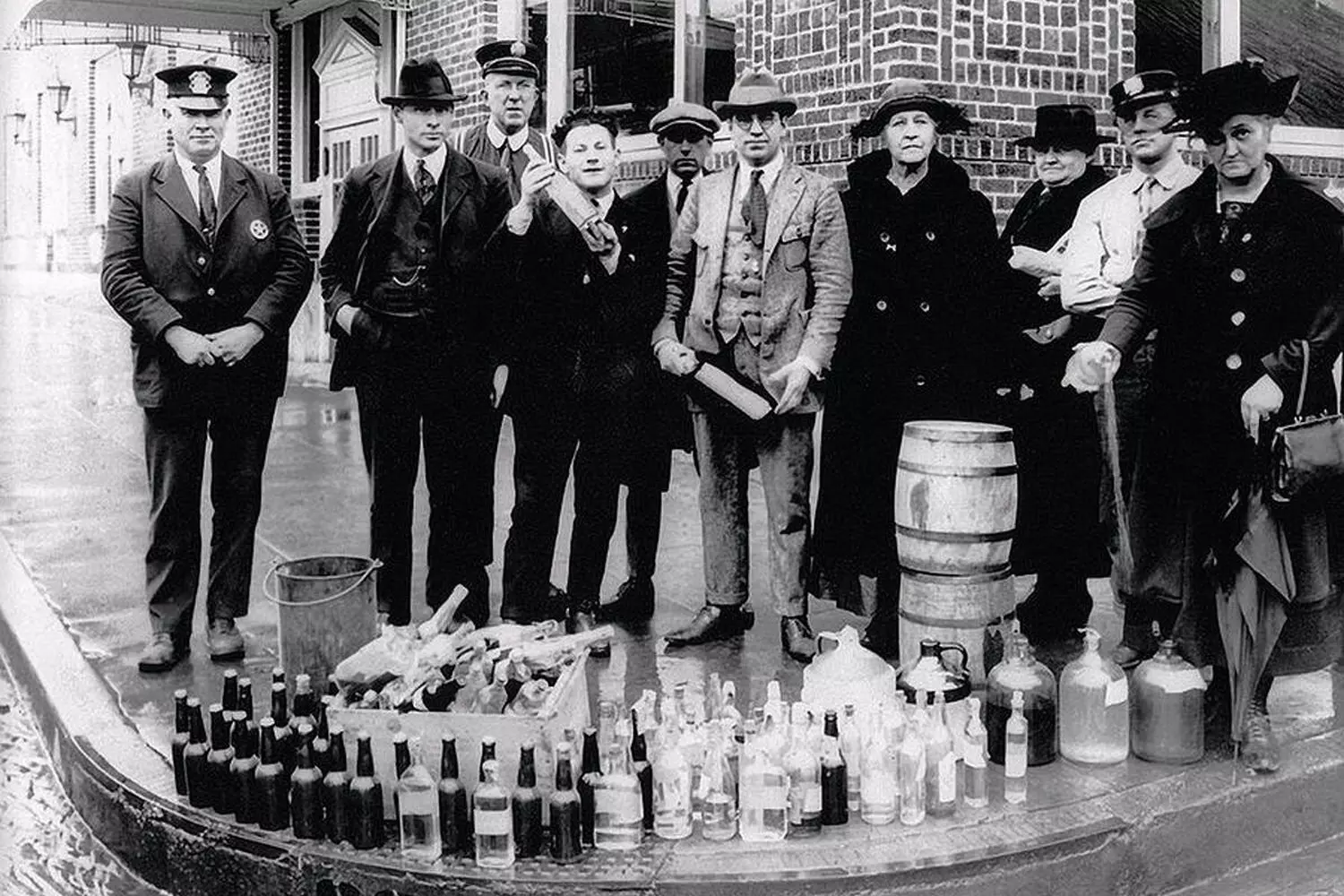
America During Prohibition
Prohibition was officially enacted on January 16, 1919, after years of advocacy and political pressure. The 18th Amendment, which banned the production, sale, and transportation of alcohol, was backed not only by activists and religious groups but also by economic and political factors of the time. However, it also faced significant opposition from advocates of personal freedoms, large businesses, and political circles.
Who Supported Prohibition?
Several key groups championed the alcohol ban:
- Religious Organizations
Protestant groups, especially Methodists and Baptists, actively pushed for alcohol prohibition, viewing it as a moral necessity. The WCTU and the Anti-Saloon League played pivotal roles, arguing that alcohol destroyed families and fueled violence. - Politicians and Reformers
Figures like William Jennings Bryan saw Prohibition as essential for social reform. Many progressive politicians believed the ban would improve public morality, enhance labor discipline, and reduce crime. - Temperance Activists
Numerous organizations and associations dedicated to combating alcoholism promoted a sober lifestyle. The American Temperance Society, founded in 1826, quickly gained popularity and lobbied for Prohibition laws.
Who Opposed Prohibition?
Opponents of Prohibition were just as numerous, motivated by economic interests and a belief in personal freedom:
- Breweries and Wineries
Many alcohol producers, especially large breweries, opposed the ban, fearing revenue loss and job cuts. They lobbied against Prohibition and, after its enactment, sought ways to circumvent it. - The Mafia
Organized crime syndicates, such as those controlling Chicago’s alcohol market, initially opposed the ban but later profited immensely from smuggling and selling illegal alcohol. - Liberal Politicians
Advocates of personal freedoms viewed Prohibition as excessive government interference in private life. They argued that banning alcohol was an overreach of constitutional authority.
Who Opposed Prohibition?
Opponents of Prohibition were just as numerous, motivated by economic interests and a belief in personal freedom:
- Breweries and Wineries
Many alcohol producers, especially large breweries, opposed the ban, fearing revenue loss and job cuts. They lobbied against Prohibition and, after its enactment, sought ways to circumvent it. - The Mafia
Organized crime syndicates, such as those controlling Chicago’s alcohol market, initially opposed the ban but later profited immensely from smuggling and selling illegal alcohol. - Liberal Politicians
Advocates of personal freedoms viewed Prohibition as excessive government interference in private life. They argued that banning alcohol was an overreach of constitutional authority.
The adoption of Prohibition in the United States unfolded through several critical stages. In 1917, the 18th Amendment to the Constitution was proposed, formalizing the nationwide ban on alcohol. Backed by a congressional majority, the amendment was ratified in January 1919. By 1920, the Volstead Act took effect, criminalizing the production, sale, and transportation of alcoholic beverages.
Thus, Prohibition emerged from a complex political process, pitting moral reformers against defenders of economic interests and personal freedoms. Between 1920 and 1933, American society underwent radical transformations:
- The Rise of Speakeasies
Secret bars (speakeasies) became iconic venues where patrons could drink illicit alcohol, enjoy live jazz, and gamble in an atmosphere of exclusivity. These establishments made fortunes for their owners, with the most prominent ones controlled by organized crime. Despite frequent police raids, speakeasies thrived — often under the protection of corrupt officials and law enforcement. - The Jazz Revolution
Underground clubs incubated a musical renaissance, birthing new styles of jazz and blues. Legends like Louis Armstrong, Duke Ellington, and Bessie Smith rose to fame, their music embodying rebellion and cultural fusion. These venues became melting pots of sound and ideas, shaping a global musical legacy. - Organized Crime and Corruption
Prohibition-era authorities failed to curb powerful criminal syndicates that dominated the alcohol trade. Mafia groups exploited systemic corruption, bribing police, judges, and politicians to safeguard their operations. This era saw the rise of Al Capone’s Chicago Outfit and other empires built on bootlegging.
The History and Meaning of the American Flag
Legal and Illegal Ways to Circumvent Prohibition
Despite the strict regulations of Prohibition in the United States, people found ingenious ways to continue consuming alcohol, turning resistance into a cultural phenomenon. Here are the most common methods Americans used to circumvent the ban:
- 01. Medical Prescriptions
Doctors freely prescribed whiskey "for health reasons" as alcohol was considered an effective remedy for various ailments, including flu, sore throat, and nervous disorders. Pharmacies obtained licenses to sell liquor, and patients were given special prescriptions that allowed them to purchase whiskey legally. This loophole became so widespread that millions of prescriptions were issued during Prohibition, with some doctors and pharmacists amassing fortunes selling "medicinal" alcohol. - 02. Religious Exemptions
Wine for religious ceremonies remained legal, leading to a sharp increase in its consumption. Some churches dramatically boosted their orders, while unscrupulous clergy began selling "sacramental" wine on the black market. As a result, religious institutions became an unexpected source of illegal alcohol during Prohibition. - 03. Smuggling & Bootlegging
One of the most widespread ways to bypass Prohibition was alcohol smuggling. Bootleggers used secret routes to transport liquor from Canada and Mexico, while others produced illegal alcohol sold in underground bars (speakeasies). These operations were meticulously concealed to avoid arrest and prosecution. - 04. Home Brewing
People learned to make moonshine and wine using improvised ingredients like fruit juice, sugar, yeast, and even potatoes. Rural areas saw a boom in hidden distilleries, while urban dwellers set up secret home labs. Some families legally purchased grape concentrate — officially "for making juice" — but actually used it to ferment wine. Despite the risk of arrest, home production thrived, becoming a key part of Prohibition’s shadow economy. However, this practice was dangerous, as moonshine was often made from poor-quality ingredients without proper safety controls, sometimes leading to poisoning.
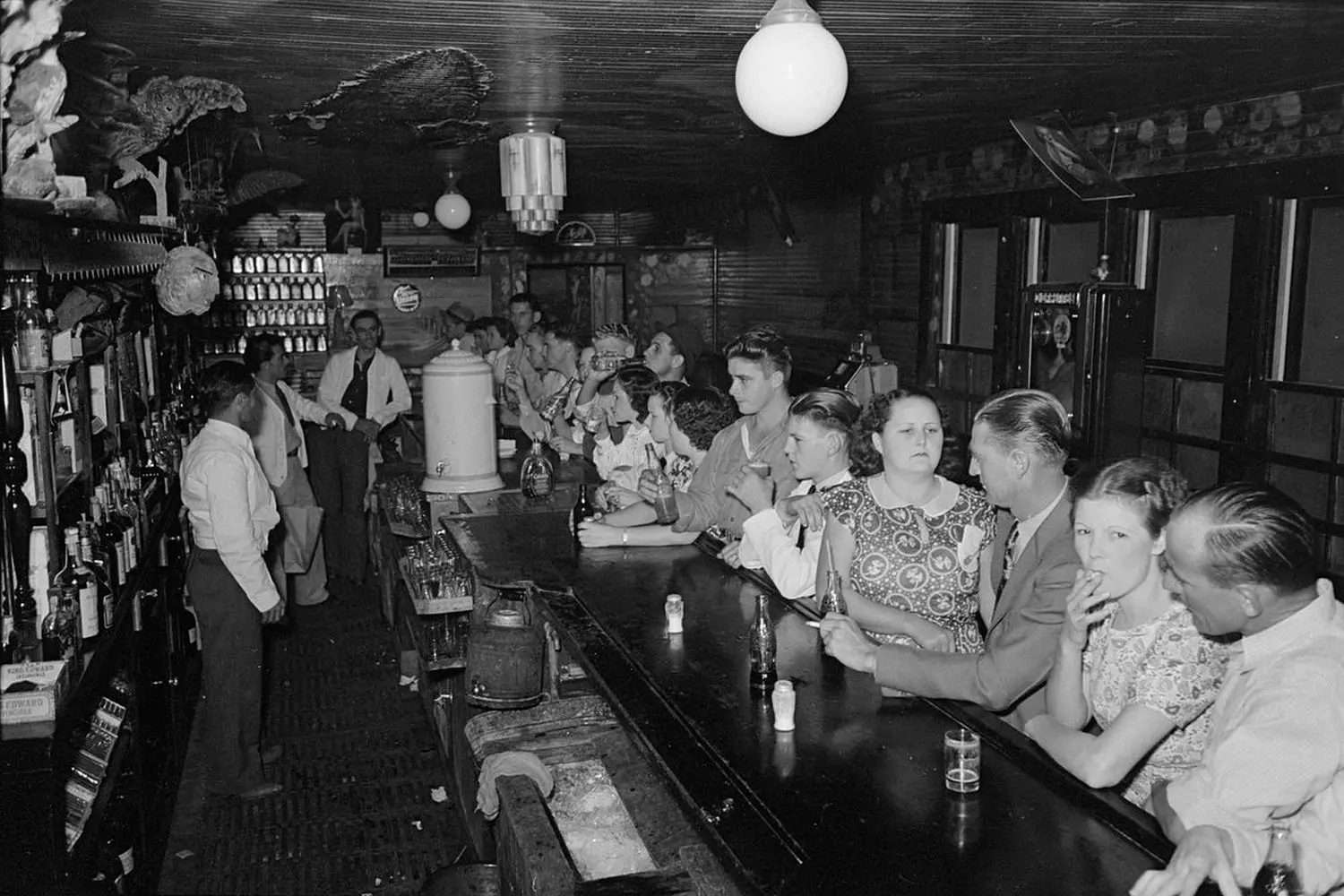
How Prohibition Fueled Crime
Al Capone, one of the most infamous names in organized crime, rose to power during Prohibition. Born in Brooklyn in 1899, he became a key figure in Chicago’s bootlegging industry. Capone controlled alcohol smuggling, established underground bars, and amassed enormous wealth. His empire thrived due to police and political corruption, allowing him to operate with near impunity. However, in 1931, he was convicted — not for violent crimes but for tax evasion. He was sentenced to 11 years in prison and served time in Alcatraz, marking the downfall of his criminal reign.
Al Capone: The Bootleg King
Al Capone remains one of the most infamous and tragic figures in the history of organized crime. Born in 1899 in Brooklyn, New York, he became the defining symbol of the criminal underworld during the 1920s. When Prohibition took effect in 1920, Capone and his gang quickly capitalized on the opportunity, establishing themselves as major players in the illegal alcohol trade.
For years, Capone controlled the majority of alcohol flowing into Chicago. He orchestrated the smuggling of liquor from other countries while also operating his own production facilities. His organization became notorious for its brutality and corruption, which enabled him to ruthlessly eliminate competitors and manipulate law enforcement.
Capone built his empire not just through alcohol distribution but also by establishing a network of underground bars known as speakeasies, which flourished during this era. His criminal profits grew exponentially each year, and despite numerous attempts by police to apprehend him, he consistently evaded imprisonment. His grip on Chicago was absolute — he controlled not only the city's criminal enterprises but also influenced local governments and political structures through systemic bribery and corruption.
Yet in 1931, authorities finally caught him — not for murder or drug trafficking, but for tax evasion. Capone was sentenced to 11 years in prison and sent to the infamous Alcatraz Penitentiary. Despite his unparalleled success in the criminal world, his career ended in downfall as legal measures ultimately proved too powerful for even this mafia kingpin to escape.
Johnny Torrio and Other Mobsters
Al Capone was not the only criminal of his time. One of his mentors and teachers was Johnny Torrio, who became one of the most influential figures in the criminal underworld. Torrio was the mastermind behind Chicago's crime syndicate and played a crucial role in developing the city’s bootlegging industry. He was the first to establish a large-scale, well-organized network that supplied alcohol to Chicago and its neighboring regions. However, after an assassination attempt in 1925, Torrio handed over his empire to the young Al Capone.
Besides Capone and Torrio, other famous mobsters thrived during Prohibition, including Lucky Luciano and Vito Corleone, who became symbols of the era of organized crime. Lucky Luciano, in particular, pioneered "mob management," creating a structure in which various criminal groups operated across the country, dividing the illegal market and setting their own rules.
Bootlegging and Speakeasies: How the Mafia Shaped the Alcohol Market
Bootlegging became a cornerstone of the mafia's economy. Illegal alcoholic beverages were sold through so-called speakeasies — underground bars that operated discreetly and gained immense popularity in major cities like New York, Chicago, and Boston. These bars were often hidden in basements, behind fake doors, or within legitimate businesses as a front.
Speakeasies were not just places to obtain illicit alcohol; they were cultural hubs where jazz music played, people danced, and significant social events took place, attracting celebrities and politicians alike.
As speakeasies flourished, the mafia maintained control over alcohol production and distribution. The mob imported alcohol from overseas, leveraging connections with corrupt officials and law enforcement. Many conspiracies and violent crimes revolved around this lucrative black market. The success of organized crime groups was directly linked to their ability to control the flow of illegal liquor and intimidate both ordinary citizens and authorities.
Corruption and Violence: How Far the Mafia Went to Stay in Power
To maintain their dominance, the mafia relied on more than just economic and political manipulation — they wielded violence as well. In this power struggle, there were no rules. Rivals, former allies, and even innocent people often became victims of retribution and intimidation. Crime syndicates resorted to murders, bombings, and other ruthless methods to eliminate threats.
Bribery was another key component of Al Capone’s empire and other mafia leaders' influence. The mob secured its safety by paying off police officers, judges, and sometimes even politicians. This ensured near-total immunity for organized crime groups, allowing them to operate with impunity.
Bootlegging became an inseparable part of the Prohibition era, and figures like Al Capone remain historical symbols of mafia control, corruption, and violence. Prohibition fueled the growth of organized crime, giving the mafia an opportunity to strengthen its power and expand its influence. However, crime syndicates and corruption proved that restrictive laws can sometimes have unforeseen and even catastrophic consequences for society.
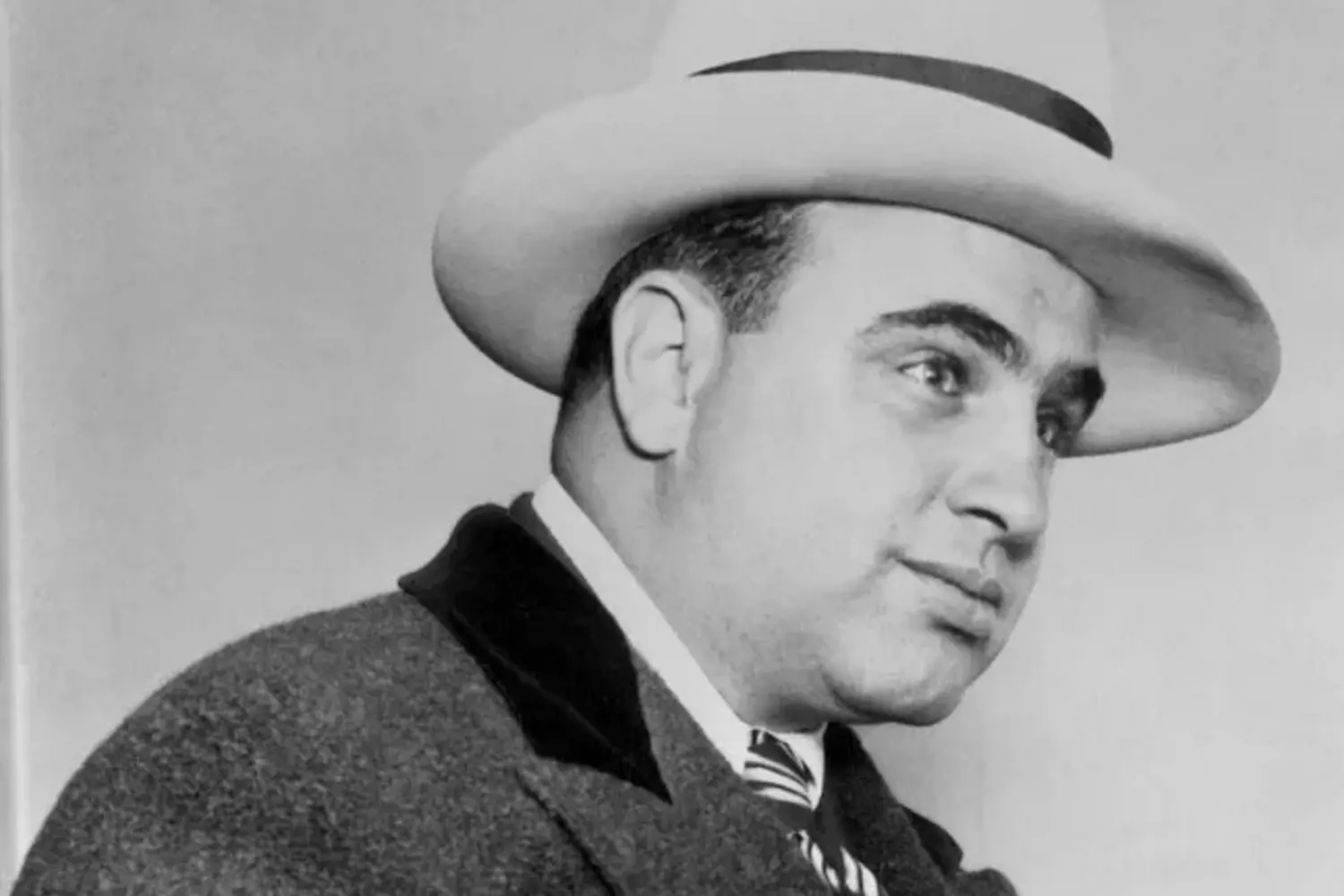
How Did Florida Survive Prohibition?
During Prohibition, Florida — particularly its coastal cities like Miami, Miami Beach, and Fort Lauderdale — became major hubs for alcohol smuggling and bootlegging operations. The warm climate, strategic geographic location, and numerous ports created ideal conditions for the illicit liquor trade. These cities became hotspots for underground business, attracting both the mafia and adventurers from around the world, making Florida one of the most significant regions in Prohibition history.
A Center for Smuggling and Mafia Operations
Miami, with its prime location on the Atlantic coast, served as a crucial entry point for alcohol smugglers seeking ways to bypass national restrictions. Vast quantities of whiskey, rum, and other spirits were funneled through Miami. Criminal groups used the city as a vital transportation hub, drawing the attention of the mafia and organized crime syndicates, which turned it into a key transshipment base.
Miami’s proximity to islands and coral reefs provided natural cover for secret operations, making it an ideal location for mafia-controlled bootlegging activities. The city became a focal point for smuggling liquor from Cuba and other Caribbean islands.
Exclusive Speakeasies and Nightlife
Miami Beach, known for its resort appeal and tourist attractions, became a prime location for the underground alcohol trade. The area was filled with speakeasies — illegal bars where both locals and visitors could enjoy a drink despite the ban. These establishments were often hidden behind fake doors in hotels and restaurants, with their owners relying on corruption among local officials and law enforcement for protection.
One of the most famous venues was "The Flamingo Club" a symbol of the era that attracted celebrities and wealthy patrons. The mafia played a significant role in running such establishments, ensuring a steady demand for alcohol while turning Miami Beach into a hotspot for the rich and influential.
A Smuggling Gateway and Distribution Routes
Fort Lauderdale, located near Miami, also became a critical hub for smuggling operations. Its maritime routes and harbors allowed bootleggers to transport and distribute alcohol across the country. Smugglers often used small yachts and other vessels to navigate past police and coast guard patrols, avoiding detection of larger shipments.
Fort Lauderdale gained notoriety as a center for covert smuggling activities, using waterways and hidden docks to outmaneuver law enforcement. These secret routes became an essential component of the underground liquor trade.
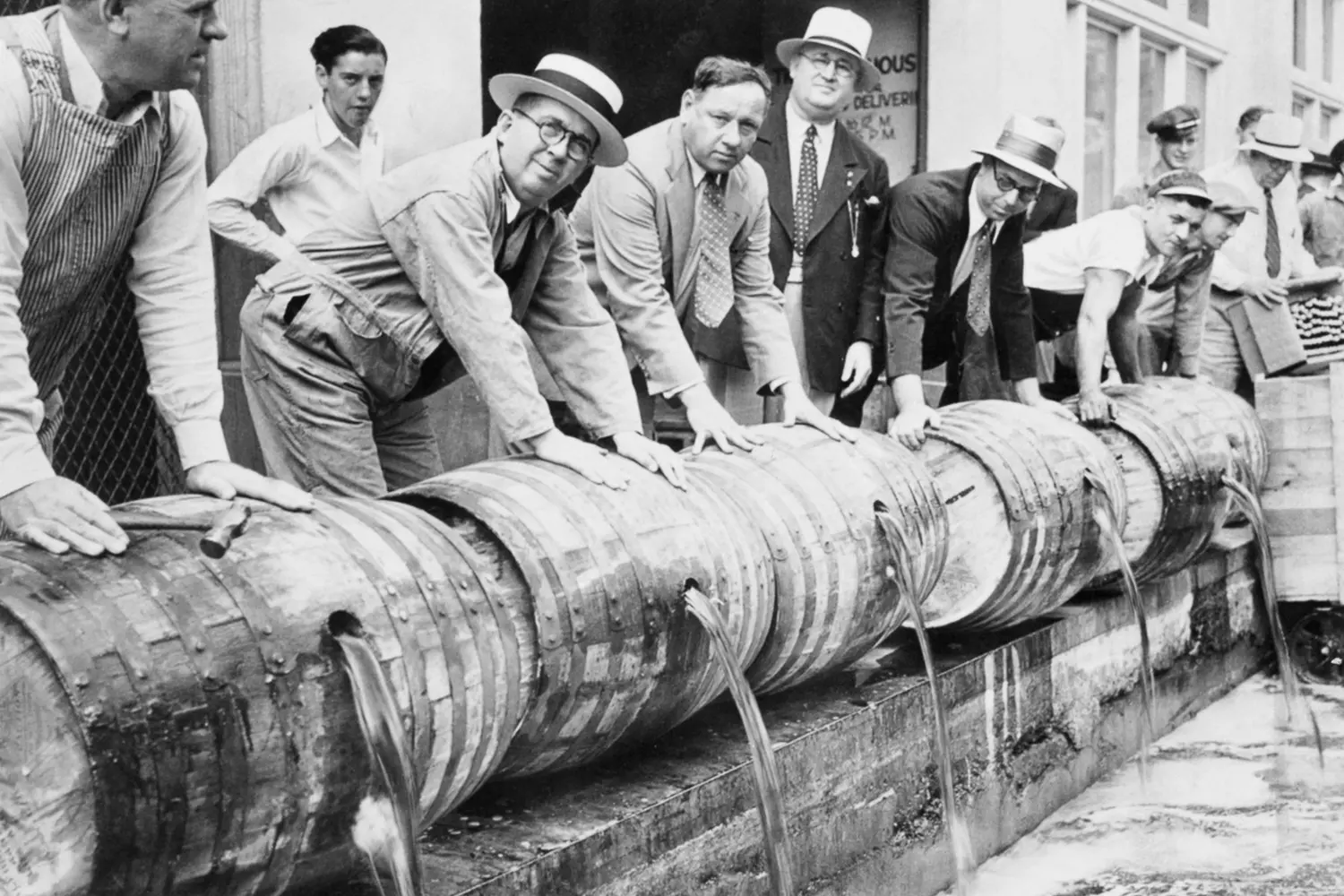
The Repeal of Prohibition
- The Great Depression
The economic crisis of 1929 drastically reduced tax revenues. The government recognized that legalizing alcohol could become a crucial source of income, helping to improve the economy. Alcohol sales would generate substantial funds for government programs and job creation. - Public Dissatisfaction
Despite the ban, people continued to drink. Legal sales were prohibited, but bootlegging thrived, exacerbating crime instead of solving the problem. Citizens grew tired of Prohibition, as the situation only fueled the rise of organized crime and illicit alcohol supply chains. - Political Pressure
In 1932, Franklin D. Roosevelt, running for president, strongly advocated for the repeal of Prohibition. He understood that the ban not only failed to address its intended goals but also created new problems that threatened national stability. Roosevelt pushed for reforms aimed at economic recovery and restoring trust in government institutions.
As a result, in 1933, the 21st Amendment was ratified, officially ending Prohibition. This decision was a landmark moment in U.S. history, as it not only resolved the issue of illegal alcohol trade but also helped stimulate the economy during the Great Depression.
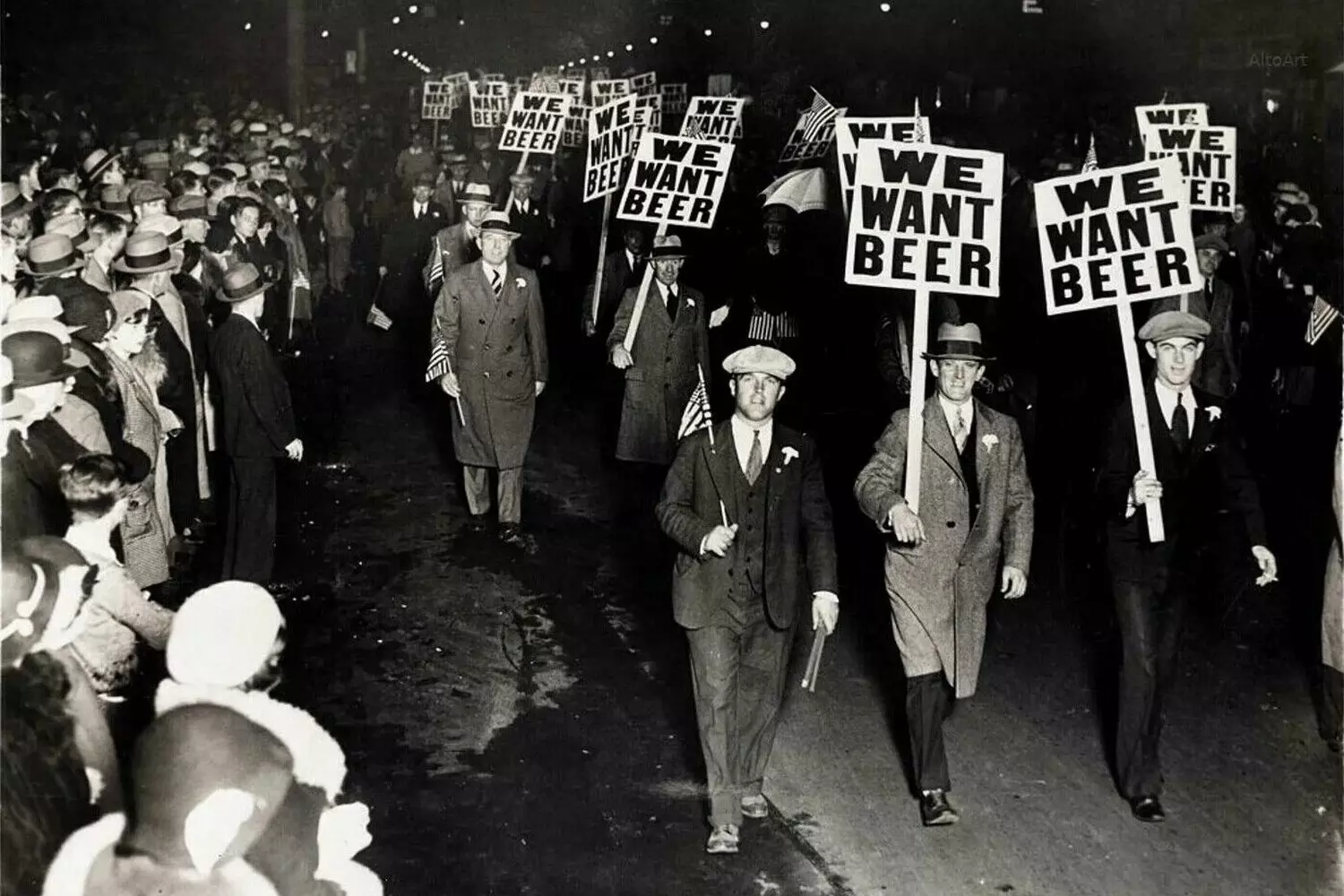
No storm, no war, no crisis can devastate a nation like Prohibition does.Franklin D. Roosevelt
Prohibition in the U.S. remains one of the most controversial policies in history. It demonstrated that bans do not always lead to positive outcomes — instead, they can exacerbate existing problems. Although Prohibition was officially lifted in 1933, its consequences were felt for decades to come.
Want to explore places connected to the Prohibition era? American Butler offers exciting tours in Miami, where you can learn how alcohol smuggling thrived and uncover the secrets of hidden speakeasies.














